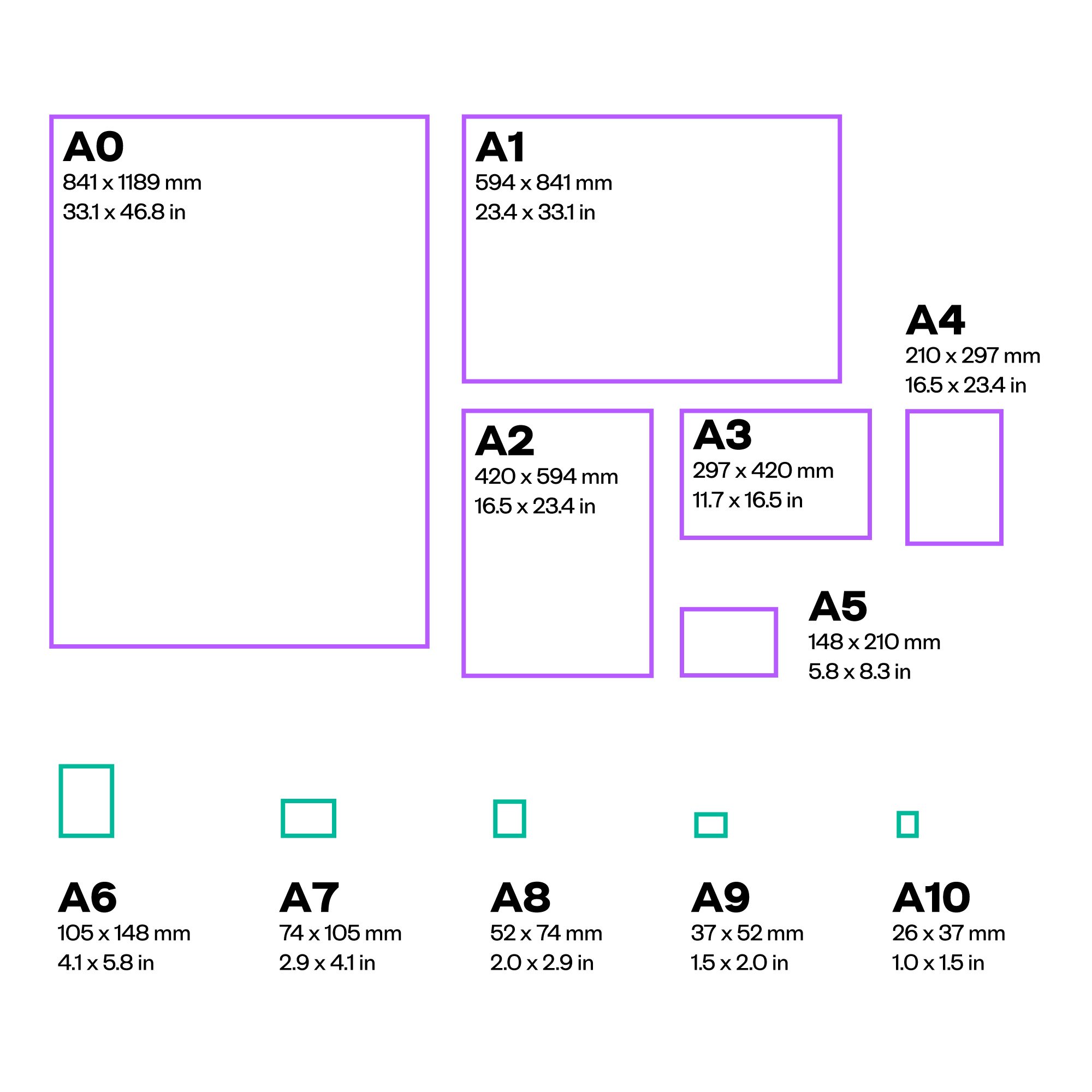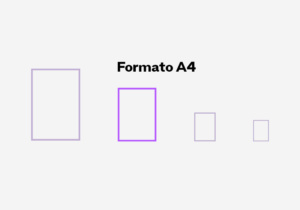The A4 paper size is perhaps the most recognized paper format, a staple in our daily routines found in the standard sheets used by printers at home and in the office. Its application is as widespread as it is diverse, and we’re about to explore the multitude of ways it continues to be effectively utilized.
Let’s dive straight into the details of the A4 size: its precise dimensions, origins, and essential tips for maximizing its use in your print projects.

Enjoy the read!
A4 Size and the ISO 216 Standard
The dimensions of the A4 size are dictated by the ISO 216 standard, which sets the paper sizes for the majority of the world, with the notable exceptions of Canada and the United States, where Letter size is prevalent. An interesting fact is that ISO 216 was initially implemented in Germany during the 1920s before being adopted more widely.
The A4 size has a fascinating history, tracing back to the era of the French Revolution, though it fell out of use until its revival in Germany in the 1920s. As mentioned in our discussions on paper sizes, the ISO 216 standard bases all subsequent sizes on the A0 paper size.

Specifically, the A4 size is one-sixteenth the size of A0.
In terms of measurements, the A4 size measures 21.0 cm by 29.7 cm, or 8.3 by 11.7 inches.
For those interested in digital dimensions, an A4 sheet for 300 dpi quality printing should have a minimum resolution of 2480 by 3508 pixels.
Here’s a quick reference table showing the dimensions of the A series sizes in centimeters, inches, and pixels (at 300 dpi quality for printing).
| Format | Millimeters | Inches | Pixels (printing in 300 dpi quality) |
| A0 | 841 x 1189 | 33 x 47 | 9.933 x 14.043 |
| A1 | 594 x 841 | 23 x 33 | 7.016 x 9.933 |
| A2 | 420 x 594 | 16,5 x 23 | 4.961 x 7.016 |
| A3 | 297 x 420 | 11,5 x 16,5 | 3.508 x 4.961 |
| A4 | 210 x 297 | 8,3 x 11,7 | 2.480 x 3.508 |
| A5 | 148 x 210 | 5,8 x 8,3 | 1.748 x 2.480 |
| A6 | 148 x 105 | 5,8 x 4,1 | 1.240 x 1.748 |
| A7 | 105 x 74 | 4,1 x 2,9 | 874 x 1.240 |
| A8 | 74 x 52 | 2,9 x 2,0 | 614 x 874 |
| A9 | 52 x 37 | 2,0 x 1,5 | 437 x 614 |
| A10 | 37 x 26 | 1,5 x 1,0 | 307 x 437 |
The Versatility of A4
The A4 size is incredibly versatile, suited for a broad range of uses. Its initial conception in 1798, during the French Revolution, aimed to provide a standardized medium for publishing legal documents amid the period’s upheaval.
Its dimensions make it ideal for displaying text clearly and concisely, leading to its adoption by the UN as the standard format for official documents. With the widespread adoption of inkjet and later laser printers, A4 has become a fixture in both home and office settings.
A4 is commonly used for printing documents, forms, and letters. It’s the standard size for school notebooks, as well as many magazines and textbooks. Corporate brochures often take the form of an A4 sheet folded in half or thirds.
Resolution and Printing Advice for A4
We’ve outlined the specifications of the A4 format above.
Designing projects with A4 is straightforward. This format allows for the creation of booklets, books, magazines, and brochures without specific constraints. Nearly all design software supports A4 as a standard option for document and project creation. With this overview, you’re ready to start designing your own A4 materials.
Simply use any leading desktop publishing software to get started.
Happy designing!

